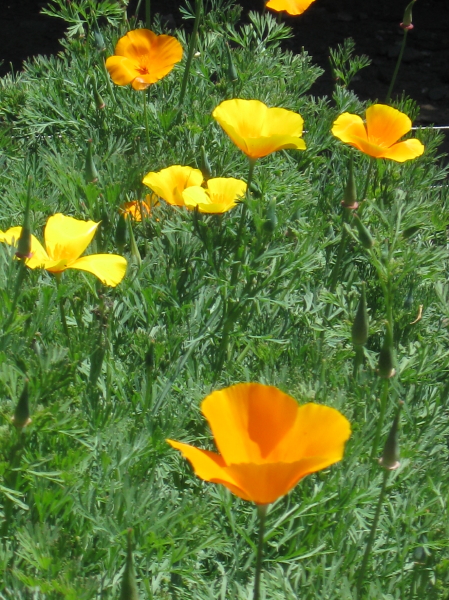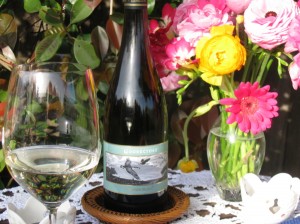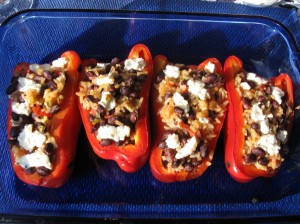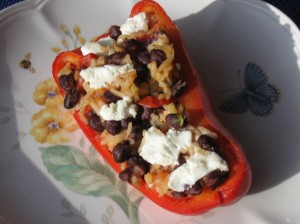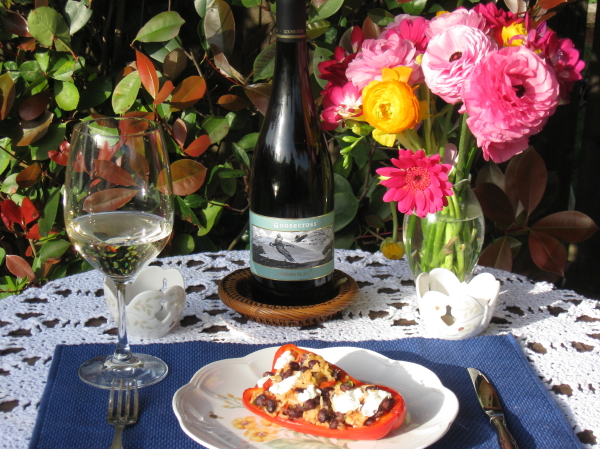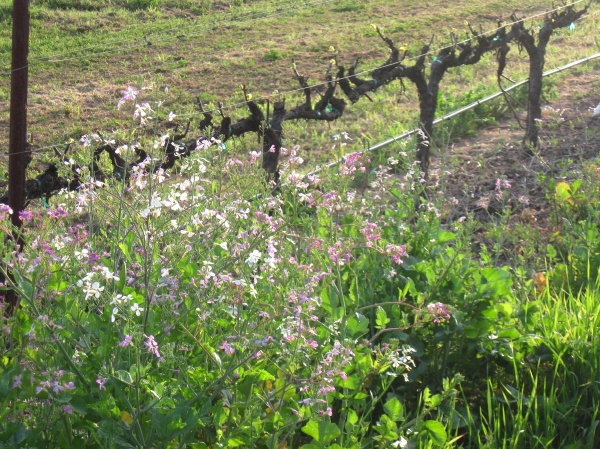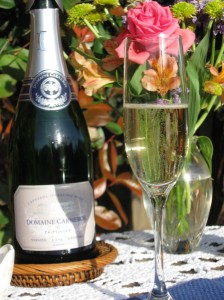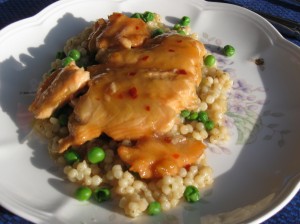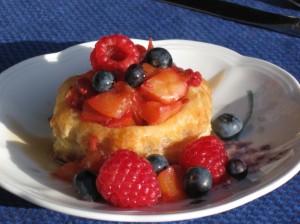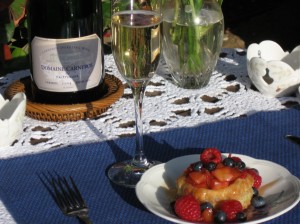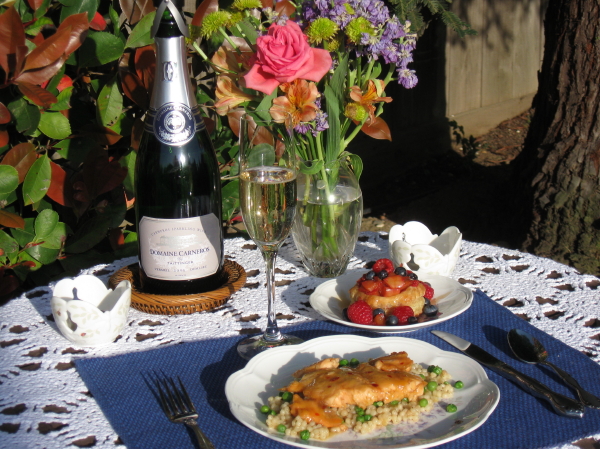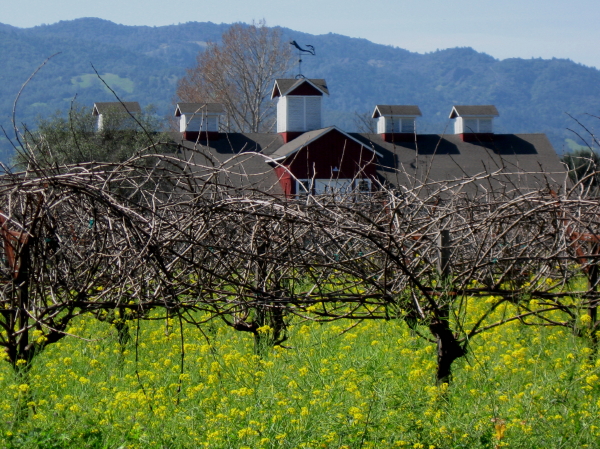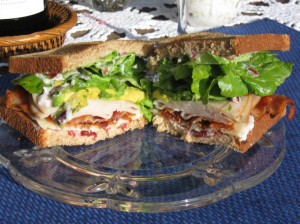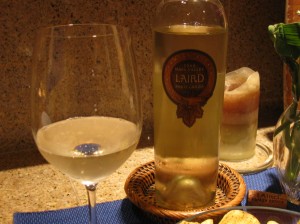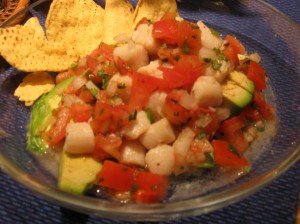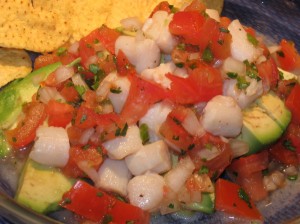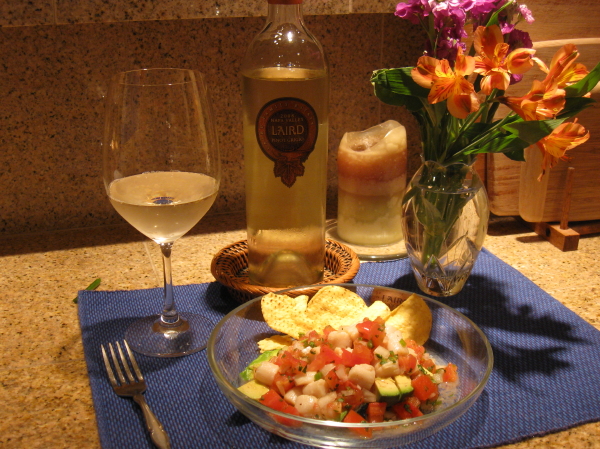Apr 08 2010
The Merits of Meritage
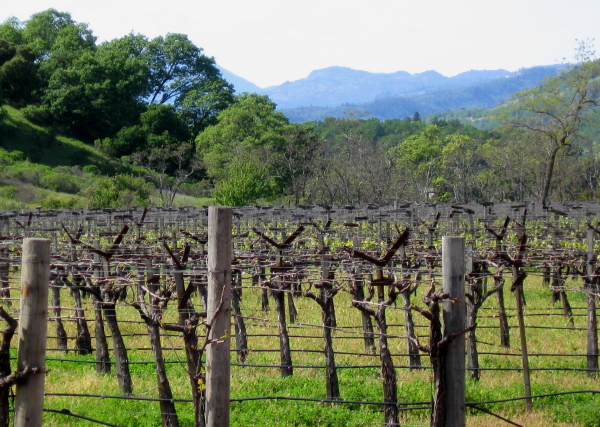
Generally when visiting tasting rooms at wineries throughout Napa Valley I overhear all things imaginable: a tourist wondering what “big game” can be hunted in the valley, others lamenting how they have no self-discipline to cellar but discipline to consume, brash statements of “this” is a “good” cabernet sauvignon (without regard to the differences in AVA-produced fruit), etc. Normally, all of these “overheards” are taken in harmless stride, overlooked with humor and if nothing else, the mere hopeful nod that people are indeed curious and excited to learn about wine. There is, however, one exception. There is an exception to all of this “free to be you and me” wine connoisseur advocacy where any veteran in the industry will cringe: the slaughtering of the pronunciation of “Meritage”.
Meritage, pronounced “mehr-ih-tihj” is truly the combination of the words “merit” and “heritage”. If you hear anyone attempting to put some sort of self-derived French pronounced ending on “Meritage”, stop listening, for that wine blowhard most likely knows little about Meritage wines.
The use of the word “Meritage” is quite intentional and there is nothing casual about it whatsoever. Officially instituted in 1989 with registration with the United States Patents and Trademark Office (“USPTO”), a group of winemakers developed the terminology in 1988 with the intention of creating a specific category of American blended wines using Bordeaux varietal grapes. Once the name “Meritage” was chosen, the Meritage Association was off to the races to categorize Bordeaux blends made in the United States.
There are many rules to what constitutes a “Meritage” and equally just as many overheard myths in tasting rooms. The misstatements to what truly constitutes a “Meritage” can be forgiven in casual conversation but among vintners, the rules must be strictly adhered to in order for the wine to officially constitute a “Meritage”. If by personal nature you are a nut for rules and details, Meritage may be the style of wine for you:
1) It must be a blend of two or more Bordeaux grapes:
(a) For red Meritage, these grapes consist of Cabernet Franc, Cabernet Sauvignon, Malbec, Merlot, Carmenere, Gros Verdot, Petit Verdot and St. MacCaire; and
(b) For white Meritage, (yes, WHITE MERITAGE does exist) these grapes are fewer consisting of Sauvignon Blanc, Semillon, and Muscadelle; provided that,
(c) For either a Red Meritage or a White Meritage, no more than 90% of any single Bordeaux grape variety may go into a wine;
2) It must be the best wine of its type produced at said winery;
3) It must be produced by a United States winery from grapes that are from an appellation in the United States; and
4) Production is limited to 25,000 cases of the said Meritage per vintage year.
Once approved to use the “Meritage” name (recalling that it is registered with the USPTO, thereby requiring permission to use the name, which means, yes, it must adhere with all of the rules listed above), it may be used in conjunction with the winery’s name or some proprietary name associated therewith.
Now that the rules are set forth, you can begin to imagine how Meritage wines can vary (particularly those that are made with red Bordeaux grape varietals). Commonly wineries in Napa and Sonoma Valleys will use Cabernet Sauvignon grapes in a red Meritage, but that is not a prerequisite and it is possible to find other combinations.
One combination, which may be a bit unique to California, focuses predominantly on Cabernet Franc with the addition of Merlot and Malbec. This combination, however, is not uncommon in France (most notably made by Cheval Blanc). Collecting grapes from the southwestern face of the Mayacamas Mountains (which are the western/eastern border between Sonoma and Napa counties), Mayo Family Winery in Sonoma Valley produces a Meritage as an homage to Cheval Blanc’s famous cepage. For those fans of the movie “Sideways”, the character Miles is drinking the famous 1961 vintage of Cheval Blanc’s cepage at the end of the movie. “Sideways” fan or not, Mayo Family Winery’s 2005 “The White Horse” Meritage (“White Horse Meritage”) presently is just deliciously smooth and silky.
When originally released for sale, the 2005 White Horse Meritage was described as having significant tannins. However, given that it is now April of 2010, the wine has had just enough time to settle in the bottle and the tannins initially described have since softened. Mayo Family Winery purposefully created this Meritage with the intent of emulating Cheval Blanc’s cepage. It similarly consists of 66% Cabernet Franc, 33% Merlot and 1% Malbec. Given the blending of the Cabernet Franc and Merlot, it is understandable that the wine would start to soften and teasingly show off a silky quality that will only continue to develop in the bottle with continued aging.
The 2005 White Horse Meritage shows off a romantic nose consisting of soft floral violet notes with fruit reminiscent of black cherry and currant and a subtle hint of oak. In the mouth, as previously mentioned, the wine has a slight silky feel with well-blended dark fruit and a dash of white pepper on the finish. The tannins have softened such that as a red wine it is very accessible and open to a variety of food pairings.
As discussed in earlier articles, when creating food pairings for wine, the mere color of the wine does not necessarily dictate the type of protein to be used. As a general rule of thumb, poultry and fish do pair better with white wine. However, if the tannins are soft and balanced, certain poultry dishes and certain fish can successfully be paired with red wine. Given that the tannins in the 2005 White Horse Meritage are soft and silky, this week’s menu boldly hosts:
· Stuffed Chicken Breasts with Red Wine Reduction Sauce; and
· Wild Mushroom Herbed Couscous.
Red wine and chicken may be one thing, but red wine reduction sauce and chicken? Before you recoil in disbelief, there are three words to remember: coq au vin. Yes, coq au vin is that French recipe of roasting chicken in a red wine reduction sauce that was popularly made famous in the United States by Julia Child. When I originally tasted the 2005 White Horse Meritage this week, it was a natural reaction to want to pair chicken with red wine and given the softness of the tannins in the wine, it seemed wholly appropriate that a red wine reduction sauce would pair well. Only after I had tested some things in the kitchen did it dawn on me that indeed that here was a classic French styled red wine and by natural chance I was creating something similar to the classic French recipe coq au vin. Intuition aside, to truly flush out nuances in this particular wine, I took the pairing one step further and elected to create a stuffed chicken breast.
Given the nuances of juicy dark fruit, pepper, charred oak and soft tannins, I elected to stuff the chicken breasts with a combination of chopped steamed broccoli, provolone cheese (due to its mildness), marjoram (which is the softer cousin of oregano) and a chopped roma tomato (which had been sautéed in a bit of black raspberry vinegar). Including the tomato was intentional because it lent a hint of acidity (which matches the acidity that I typically find in Mayo Family Winery’s wines) and similarly adds a bit of juicy bright flavor, which complements the bright dark fruit that is found in the wine. Broccoli, provolone, and marjoram were chosen due to their soft textures and to add an earthy vegetal component to the pairing. The stuffed chicken breasts were baked in a combination of chicken stock and dry red wine to ensure that the poultry would remain juicy. Add mushrooms sautéed in the red wine reduction sauce, the pairing was sensationally delectable.
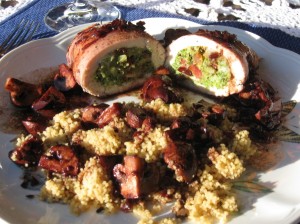
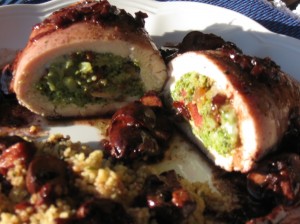
Wine as always is about what you enjoy, however, if you enjoy the game of rules and the puzzle of determining what you can taste in American blending techniques of Bordeaux grapes, explore Meritage wines. And this summer when you are out visiting the wineries, when you hear that self-professed wine snob mispronouncing “Meritage”, simply smile politely and discretely back away. Cheers!
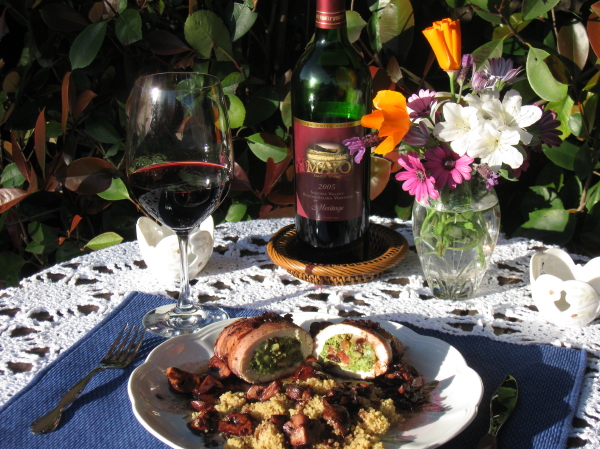
Comments Off on The Merits of Meritage
